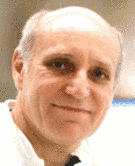Causes, pathways and modifiers of cardiomoypathies
 |
Coordinator of research tropic
Prof. Dr. Hugo A. Katus
University of Heidelberg
Internal Medicine III / Cardiology and Pulmonary Medicine
Im Neuenheimer Feld 410
69120 Heidelberg
email: sekretariat_katus@med.uni-heidelberg.de
Phone: 06221-56 8670
Cardiomyopathies are isolated diseases of the heart muscle which often lead to heart failure and life threatening arrhythmias. Primary cardiomyopathies normally have unknown causes whreas secondary cardiomyopathies arise from infections, intoxications or subsequent to other cardiovascular diseases like hypertension or myocardial infarction. Based on the clinical phenotype different form of cardiomyopathy are described:
The hypertrophic cardiomyopathy is characterized by a extreme increase of myocardial wall thickness whitout increase of cardiac contractile force. The thickened myocardial wall reduces the blood flow by increased tissue pressure resulting in constant myocardial hypoxia. Molecular analyses often show structural and functional mutations in the contractile apparatus. It is supposed that up to 50% of hypertrophic cardiomyopathies have a genetic background.
The dilatative cardiomyopathy is characterized by strongly dilated ventricles (left and / or right) and a pronounced decrease of ventricular elevation at normal myocardial perfusion. This disease has a very bad prognosis which is equal to many malign diseases. It is often accompanied by severe rhythm disorders, edema caused by reduced cardiac contractility or thromboembolic events. After onset of diagnosis nearly 20% of the patients are dying every year. Also the dilatative cardiomyopathy shows a familial accumulation indicating a genetic background in about 20-40% of the cases. Numerous genes where identified which are responsible for structural changes in the diseased cardiomyocyte.
The hypertrophic and the dilatative form of cardiomyopathy are by far the most frequent diseases of the heart muscle. The much more rare restrictive cardiomyopathy is characterized by a affection of the elastic properties of the myocardial fibres. The arrhythmogenic right ventricular cardiomyopathy is also quite rare. It is characterized by a fatty and connective-tissue-like degeneration of the myocardium. On this basis rhythm disorders can arise with a high risk of sudden cardiac death. This disease also shows a strong genetic component.
more information about the working group:
http://www.med.uni-heidelberg.de/med/med3/index.html